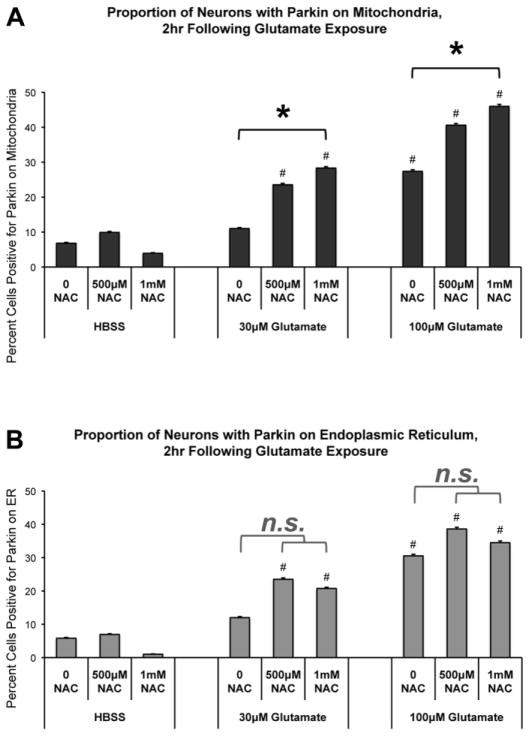Figure 5. Co-treatment with the antioxidant N-acetyl cysteine (NAC) promotes Parkin localization to mitochondria following glutamate exposure.
Rat cortical neurons were co-transfected with Parkin, mtDsRed2, and GFP-Sec61β at DIV6. At DIV15, neurons were pretreated with NAC (500μM or 1mM) or control media for 1hr. Neurons were then pulsed with either (1) glutamate (30μM or 100μM) plus NAC (500μM or 1mM), (2) glutamate alone, (3) NAC alone, or (4) HBSS control. The 10min treatment exposure was followed by a 2hr incubation period in the corresponding culture media used for pretreatment. Cells were then assessed by confocal analysis for Parkin accumulation on mitochondria or endoplasmic reticulum (ER). (A) *: Co-treatment of NAC with glutamate increased the proportion of neurons with Parkin-mitochondrial accumulation as compared to glutamate alone (* = p<0.05 between respective NAC/glutamate condition and glutamate alone). #: Exposure to glutamate, with or without NAC co-treatment, increased the numbers of neurons positive for Parkin-mitochondria accumulation at 2hr following treatment as compared to respective non-glutamate HBSS controls (# = p<0.05). (B) n.s. bars: NAC co-treatment did not significantly alter the number of cells exhibiting Parkin accumulation on ER as compared to glutamate alone. #: As in earlier experiments, glutamate exposure increased the numbers of neurons with Parkin-ER accumulation as compared to respective non-glutamate HBSS controls (# = p<0.05). 87–106 individual cells per condition, across 4 independent neuronal preparations; +/− SEM.

